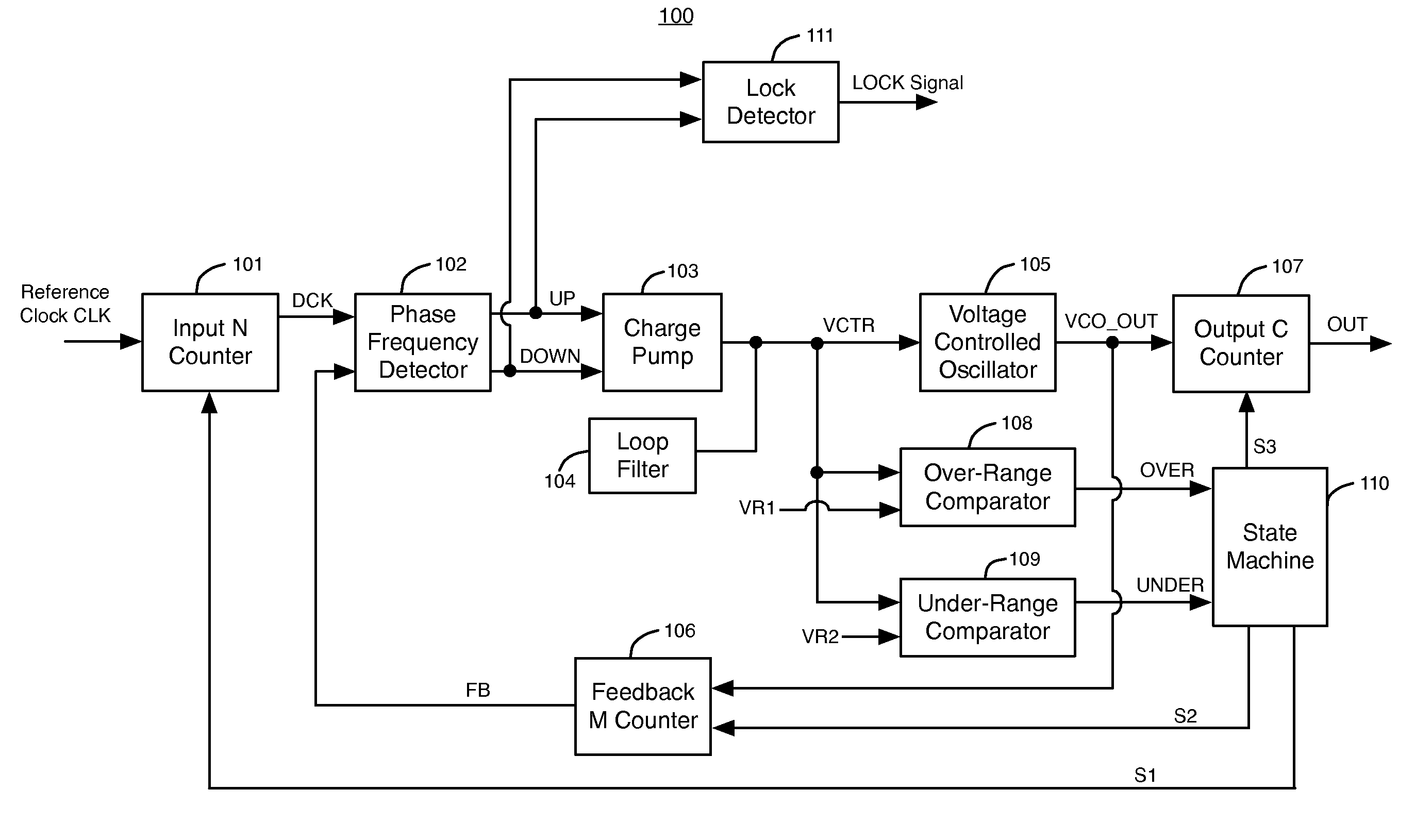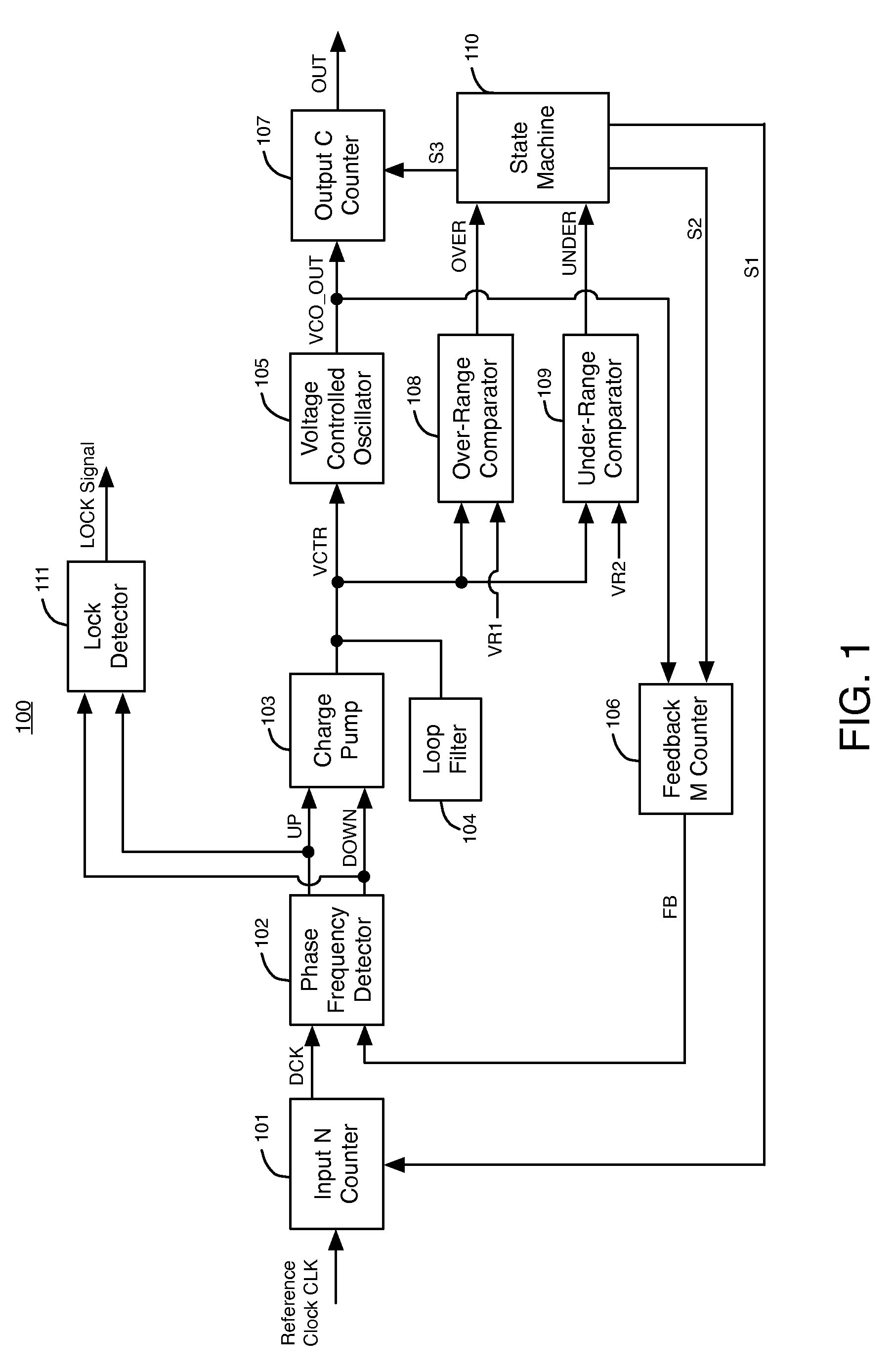Techniques for dynamically adjusting the frequency range of phase-locked loops
a phase-locked loop and frequency range technology, applied in the field of electronic circuits, can solve the problems of significant deformation of the performance of the vco and functional failure of the pll
- Summary
- Abstract
- Description
- Claims
- Application Information
AI Technical Summary
Benefits of technology
Problems solved by technology
Method used
Image
Examples
Embodiment Construction
[0014]FIG. 1 illustrates a phase-locked loop (PLL) 100, according to a first embodiment of the present invention. PLL 100 includes input N counter 101, phase and frequency detector (PFD) 102, charge pump 103, loop filter 104, voltage controlled oscillator (VCO) 105, feedback M counter 106, output C counter 107, over-range comparator 108, under-range comparator 109, state machine 110, and lock detector 111.
[0015]Input N counter circuit 101 receives an input reference clock signal CLK at its input terminal. Counter 101 adjusts the frequency of clock signal CLK by a frequency ratio N to generate a periodic input signal DCK. For example, counter 101 can multiply or divide the frequency of the clock signal to generate DCK. The periodic input signal DCK is transmitted to a first input of phase and frequency detector (PFD) 102. A feedback signal FB is transmitted from the output of feedback counter 106 to a second input of PFD 102.
[0016]Phase and frequency detector 102 and charge pump 103 ...
PUM
 Login to View More
Login to View More Abstract
Description
Claims
Application Information
 Login to View More
Login to View More - R&D
- Intellectual Property
- Life Sciences
- Materials
- Tech Scout
- Unparalleled Data Quality
- Higher Quality Content
- 60% Fewer Hallucinations
Browse by: Latest US Patents, China's latest patents, Technical Efficacy Thesaurus, Application Domain, Technology Topic, Popular Technical Reports.
© 2025 PatSnap. All rights reserved.Legal|Privacy policy|Modern Slavery Act Transparency Statement|Sitemap|About US| Contact US: help@patsnap.com



